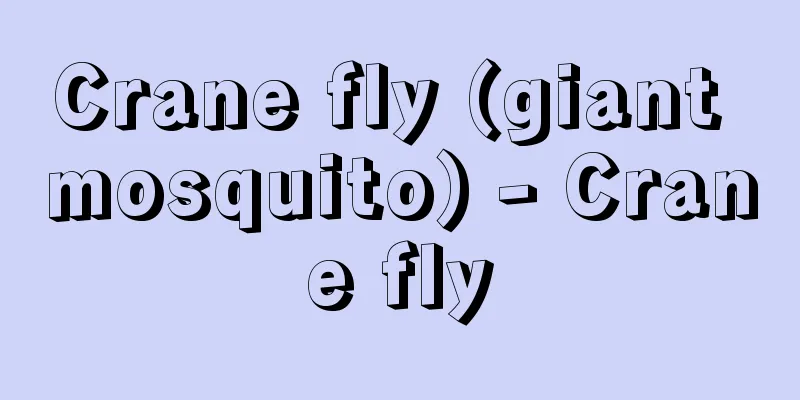Kyomoto Popular Novels - Keihon Tsuuzoku Shosetsu

|
A collection of short stories in colloquial language from the Song Dynasty in China. The editor and date of publication are unknown. It is a collection of so-called wahon (scripts for storytelling) scripts that were popular in Song Dynasty cities. The original number of volumes is unknown, but what remains today is the seven volumes from volume 10 to volume 16: "The Tengyoku Kannon," "The Bodhisattva Man," "The Demon of a Cave in the Western Mountains," "The Zhicheng Zhang Juguan," "The Gong of Cui Xiang," "The Shackled Cui Ning," and "The Final Round of Feng Yumei." In 1915, bibliographer Miao Yuansun published it as a reprint of a Yuan Dynasty manuscript in the series "Enhua Dongtang Xiaopin." There is doubt as to the existence of the original text, and it is thought that it may be a copy of a popular text from the Ming dynasty. Both were included in "Sanyan" with different titles. Regardless of when the original text was copied, the content uses old colloquial language and conveys the way a lecturer speaks in a style that mixes shi (songs) and prose, retaining the original form of a storybook from the Southern Song dynasty and making it China's oldest colloquial novel. The original text is said to have also contained a volume called "Jinzhuliang's Huang Lun" which was published by Ye Dehui in 1917, but it is generally believed to be a forgery from around the end of the Ming dynasty. [Yoshio Imanishi] "Translated by Imanishi Kaifu et al., 'Chinese Classical Literature Series 25: Selections of Popular Novels from the Song, Yuan, and Ming Dynasties' (1970, Heibonsha)" Source: Shogakukan Encyclopedia Nipponica About Encyclopedia Nipponica Information | Legend |
|
中国、宋(そう)代の口語短編小説集。編者、成立年代不明。宋代の都市で流行した講談の台本、いわゆる話本(わほん)を集めたもので、もとの巻数は不明だが、現在伝わるのは第10巻から第16巻に至る『碾玉観音(てんぎょくかんのん)』『菩薩蛮(ぼさつばん)』『西山一窟鬼(せいざんいっくつき)』『志誠張主管』『拗相公(ようしょうこう)』『錯斬崔寧(さくざんさいねい)』『馮玉梅(ふうぎょくばい)団円』の7巻で、1915年、書誌学者の繆荃孫(びゅうせんそん)が、元(げん)代の写本の復刻と称して、叢書(そうしょ)「煙画東堂小品」に収めて出版したもの。その底本の存在には疑問があり、明(みん)代の俗本の写本ではないかと考えられている。いずれも題名を変えて『三言(さんげん)』に採録。底本の筆写の時期はともかく、内容は古い口語を用い、詞(し)(歌辞)と散文を交錯させた形式により、講釈師の語りぶりを伝えていて、南宋時代の話本の原型をとどめ、中国最古の口語小説といえる。なお底本にはほかに『金主亮荒淫(きんしゅりょうこういん)』という巻があったとされ、1917年、葉徳輝によって刊行されたが、明末ごろの偽作とするのが定説になっている。 [今西凱夫] 『今西凱夫他訳『中国古典文学大系25 宋・元・明通俗小説選』(1970・平凡社)』 出典 小学館 日本大百科全書(ニッポニカ)日本大百科全書(ニッポニカ)について 情報 | 凡例 |
<<: Spectacled guillemot (English name: Cepphus carbo; spectacled guillemot)
Recommend
Korean Envoys
An envoy sent by the king of the Yi dynasty of Ko...
Manzoni - Manzoni (English spelling) Alessandro Manzoni
Italian author. Together with Leopardi and Foscol...
term delivery
...The number of months of pregnancy is not calcu...
environmental embrittlement
…Even such tough metal materials can become britt...
Kudzu [Hot Spring] - Kudzu
This hot spring is located in Omachi city in north...
Mazurka - Mazur (Polish)
Polish folk dance. The name comes from the fact t...
Karukayado - Karukayado
This is a hall in Saikoji Temple, Ishido-cho, Kita...
Kisoji
In ancient times it was written as Kisoji, Kisoji,...
Political speech - Seidan Enzetsu
Speeches were a way to spread political ideas. Whe...
Garden Bridge
…However, it is an important waterway connecting ...
Light oil collection tax
This is a special purpose tax levied by prefectur...
Kötzschke, R.
…In the first half of the 19th century, especiall...
Cush; Kush
Also called Kush. The ancient Egyptians called wha...
Kellog, OD (English spelling) KellogOD
…The solution to (4) is a fixed point of the oper...
Boundary theory - Sakai Soron
Also written as Sakai Soron. A dispute over the bo...









